20 Facts About Sitatunga: Africa’s Swamp-Dwelling Antelope
Want to learn about Africa’s sitatunga antelope? In this post, you’ll learn 20 facts about the sitatunga.
20 Facts About Africa’s Sitatunga Antelope
The sitatunga is one of the most unusual animals found in Uganda. They are a species of small antelopes that are located throughout much of southern and central Africa. Sitatunga are known for having strange habits and living in a weird place.
Here are a few of the most fascinating facts about this type of antelope.
1. Sitatunga Mostly Live in Swamps
The habitat of sitatunga is part of what makes them so unique. These antelope like to live in swampy, marshy areas with thick grass, reed beds, and mangrove trees. They make trails through swamps that normally lead to clusters of reeds where they can sleep.
Sitatunga generally live in the swamps of south eastern Africa, near Uganda, Sudan, Rwanda, Angola, Ghana, and Kenya.
You can find sitatunga on and around the Ssese Islands, in Lake Victoria.
2. They Have an Unusual Leg Length
Many people who see the sitatunga comment on their rather odd shape. These animals look like they are always hunched over because their rear legs are actually much longer than their front legs. This strange placement helps them to balance better in marshy areas.
Another weird fact about sitatunga legs is that their pasterns, which are the part of the leg above the hoof, are actually flexible. This unusual leg construction makes it easy for sitatunga to run on damp surfaces.
3. Their Coats Have Distinctive Markings
Most sitatunga are a reddish or greyish brown color with short, coarse fur. Sitatunga have patterns of vertical white stripes and spots along their body, and their cheeks, legs, throat, and forehead also have white patches.
Male sitatunga also get a white stripe that goes down the middle of their back.
4. They’re in the Same Family as Cows
Sitatunga is technically part of the Bovidae family. They are in the Tragelaphus genus, and their technical scientific name is Tragelaphus spekii.
Sitatunga get their scientific name from John Hanning Speke, the English explorer who described them in 1863. Unlike cows, sitatunga have never been domesticated.
Learn more about antelope in our huge guide: 74 Types of African Antelope
5. Sitatunga Are Sedentary
Sitatunga spend most of their day just relaxing. They are normally only active at night or in the first couple hours before and after night. During the day, they mostly lay or stand around resting in their swamp. Sitatunga have this schedule because the heat of Uganda can be too much during the day.
6. Males Are Much Bigger than Females
The species is sexually dimorphic, which means that the guys look much different than the girls.
- Males are roughly 54 to 70 inches long, while females are just 41 to 57 inches long.
- Males weigh up to 262 pounds, while the heaviest females are just 126.
You can also tell males apart from females because they are the only ones who have horns.
7. No One Knows How Many Sitatunga Exist
These shy antelope live in hard to reach areas, so it is tricky for researchers to estimate their population. The rough guess is somewhere around 170,000, though researchers caution that this may be an overestimation. Almost 40 percent of all sitatunga live in protected regions of Africa.
8. Sitatunga Aren’t Technically Waterbucks
A lot of people mistakenly call sitatunga waterbucks because they look so similar. These two species live in the same regions and look very similar.
However, sitatunga are spotted instead of having clearly defined stripes. Since sitatunga spots frequently cluster in stripes, it can be tricky to tell them apart. Their speckled, stripey coat helps sitatunga to blend in better in shady marshes.
9. Their Hooves Are Weirdly Shaped … Like Bananas
Sitatunga have very bizarrely shaped hooves that some people say look like bananas. Their hooves are split into two sections that splay out from each other.
This lets sitatunga walk through muddy regions without sinking in, and they barely make any noise while walking in water.
10. They Get Darker With Age
You can sometimes tell how old a sitatunga is by looking at the color of its coat. These animals reach maturity by age two, but they can live up to 20 years old in captivity.
As they get older, their coat will turn from a light russet brown to a darker greyish brown color. The average lifespan for a sitatunga is around 12 years.
11. Sitatunga Are Social but Avoid Crowds
Sitatunga most commonly spend their time either alone or in groups of two to four sitatunga. These groups are typically entirely male or female.
However, scientists have observed some sitatunga forming groups that contain an adult male with a few females and juveniles. It is more common for juveniles to go off into their own groups instead of staying with parents though. Sitatunga tend to prefer a lot of personal space, so even in herds, they stay at least a few feet apart from each other at all times.
12. The Biggest Threat to Sitatunga is Habitat Degradation
Locals frequently hunt sitatunga for their meat, but human consumption is not the main reason sitatunga populations are declining.
The main reason sitatunga are disappearing is that their swampy habitats are being drained and turned into cities and settlements. This is concerning, but sitatunga populations still remain strong in areas with swamps to support them. Therefore, they are a threatened but not endangered species.
13. They Sound Really Strange
Travelers throughout Uganda often struggle to identify what they are hearing when sitatunga communicate with each other. The animals typically make a sound similar to barking or coughing, and they use this noise to alert other sitatunga to their presence. While feeding, sitatunga communicate with very low squeaking noises.
14. Sitatunga Are Picky Eaters
Sitatunga spend most of their active time browsing for food. Instead of just eating anything green, these antelope search for their favorite foods. Most sitatunga prefer sedges, bulrushes, and other aquatic grass that typically grows along the border of waters.
Sitatunga usually leave human crops alone, but some studies have found that they do like eating sweet potatoes and certain varieties of herbs.
15. Their Horns Don’t Get Caught On Stuff
Sitatunga horns have a strange shape that keeps them from getting stuck in all the tangled, marshy undergrowth of their homes. Unlike many other types of antelopes, sitatunga do not have wide, curly horns. Their horns are very narrowly placed and they point directly backwards. Sitatunga horns only have a single or double twist and they are no longer than 36 inches.
16. Sitatunga Have Unusual Mating Habits
Sitatunga do not mate for life and the genders normally remain apart except for during a few days of the year. A male can tell if a female is interested because she will raise her head and open her mouth. After mating, a male will stay with the female for a few days and fight off any other males that come near her.
Sitatunga will breed at any time of the year, so you can come across cute baby situnga at any time.
17. Sitatunga Calves Are Constantly Falling Over
Sitatunga have a very specialized gait due to their unusual leg and hoof shape. It takes babies quite a lot of time to figure out how to balance properly on the uneven, marshy surfaces of a sitatunga habitat. During the first few months of its life, you can often see a sitatunga calf falling over and tripping into the water.
18. They Are Great Swimmers
Sitatunga are one of the best swimmers among antelope species. They almost entirely submerge themselves, so all you can see is the sitatunga nose and eyes poking out of the water. Sitatunga typically swim to cool off, escape flies, or travel to other regions of the marsh. However, they have to be careful to avoid areas of open water that might contain crocodiles.
19. Coat Color Changes Depend on Region
Sitatunga are located throughout the southern and central region of Africa, but sitatunga in different regions have slightly different looks. Ones in the eastern region tend to have fainter spots and a greyish brown coat, while the ones to the north have brighter spots. Sitatunga in Uganda tend to have more spots instead of stripes and their hair is coarser.
20. Sitatungas Have Better Hearing Than Sight
Because they tend to be semi nocturnal and live in areas with thick vegetation, sitatunga rely more on sound instead of sight. Their eyes are rather small and cannot see extremely far in the distance.
They have ears that are up to seven inches long, and they are shaped to hear sounds from all angles. Sitatunga hearing is sensitive enough that the antelope can figure out where any sound is coming from at any time.
And there you have it: 20 facts about the sitatunga antelope.
Your Turn
Have you seen a sitatunga before – in the wild or at a zoo? Have a fact or story to share? Join me in the comments!

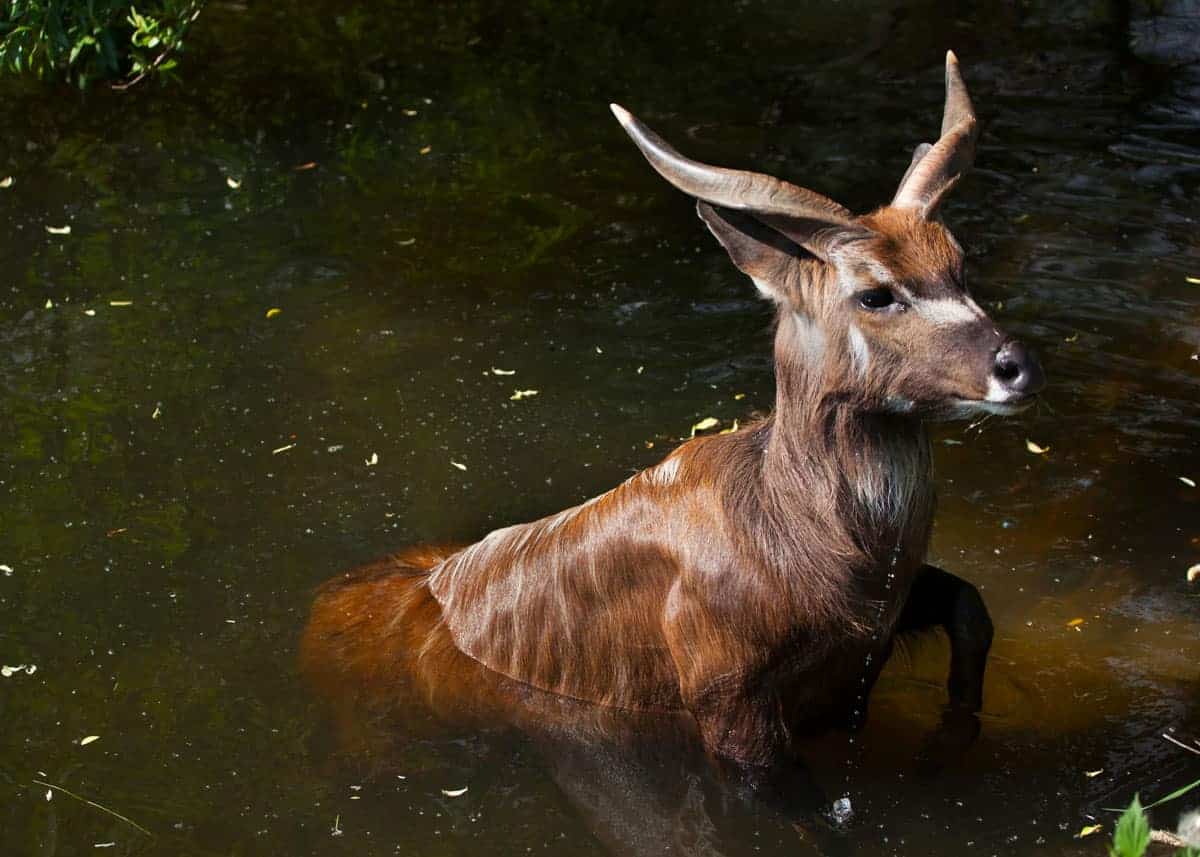
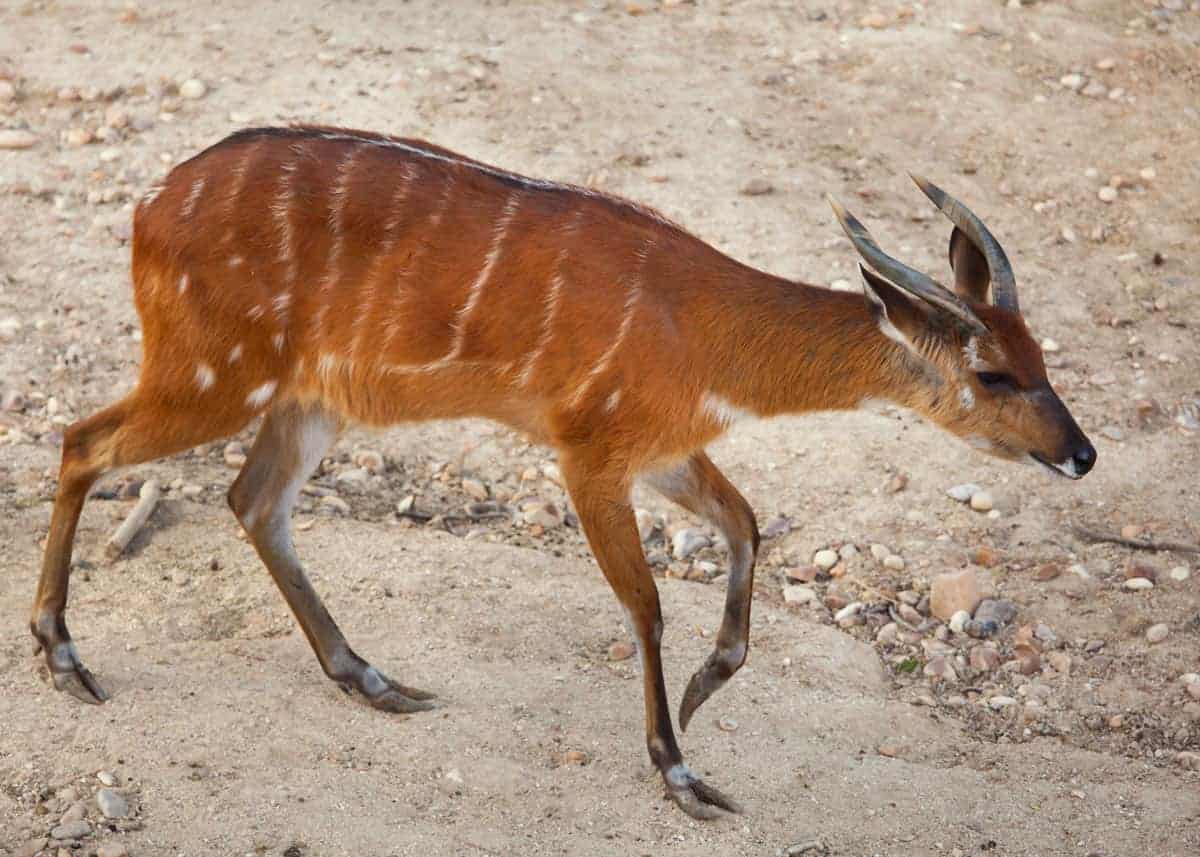
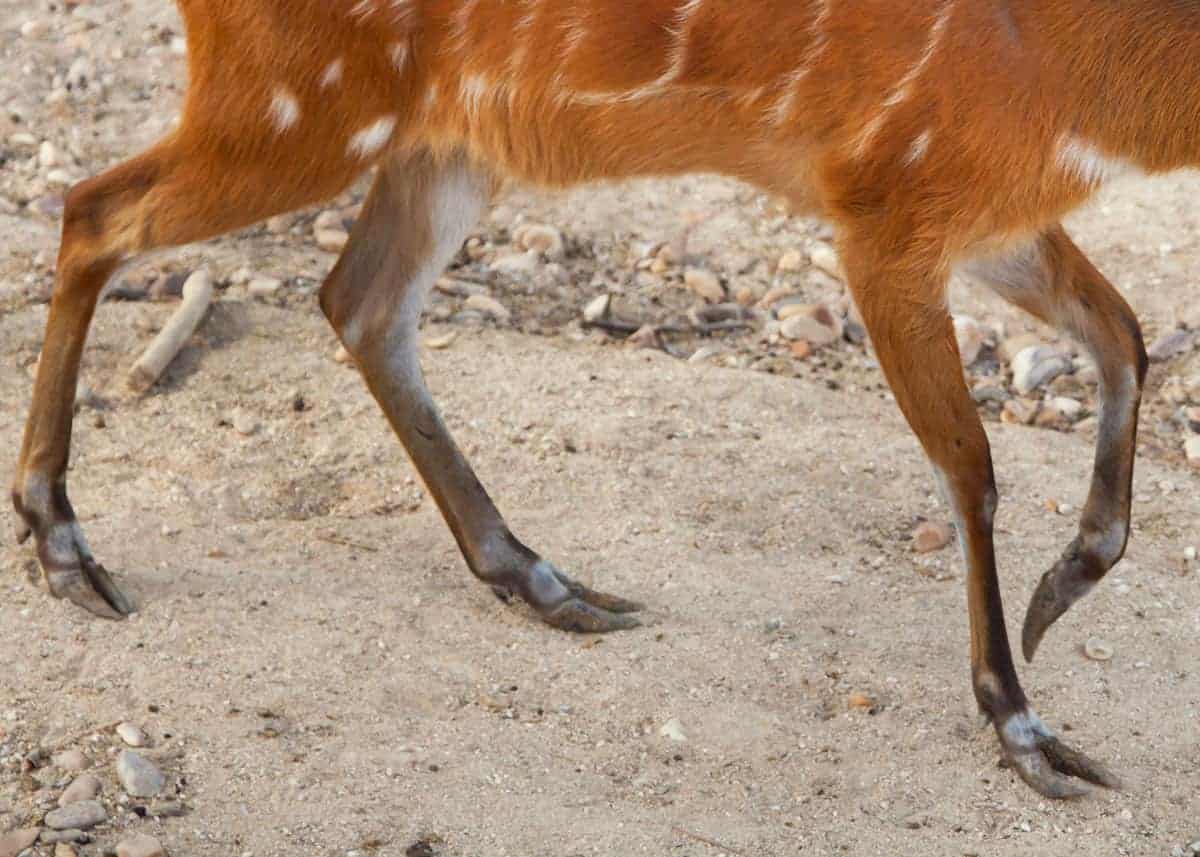
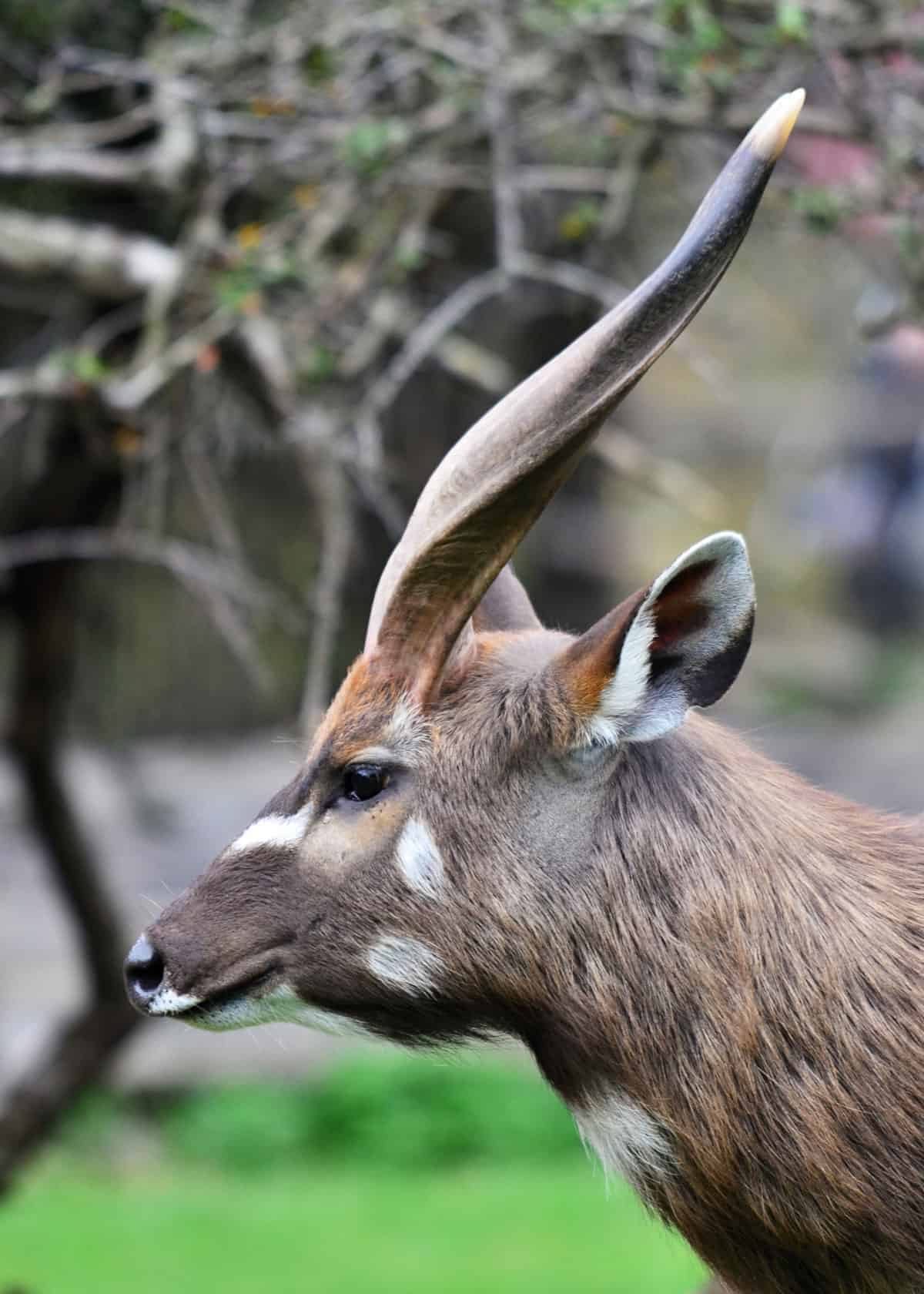





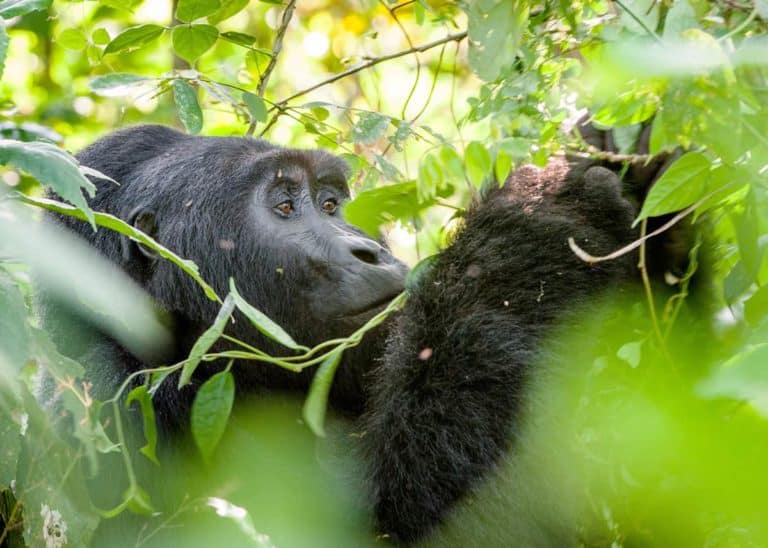
More educative
This animal is more elusive ,,haven’t seen the animal in person
So happy I found your post which is fascinating. We have one sitatunga at our local zoo (Smithsonian’s National Zoo) and we get to see a larger number at the nearby Maryland Zoo in Baltimore. So nice to know more about this beautiful animal.
@Merry, I’ve enjoyed much,though havent ever seen.